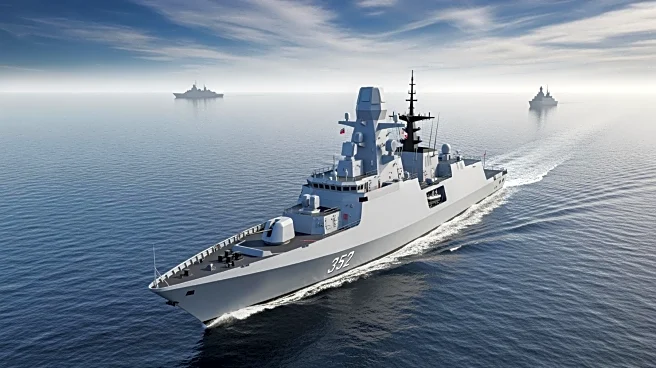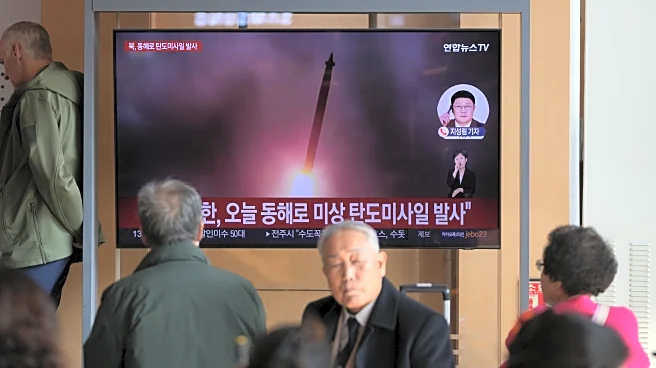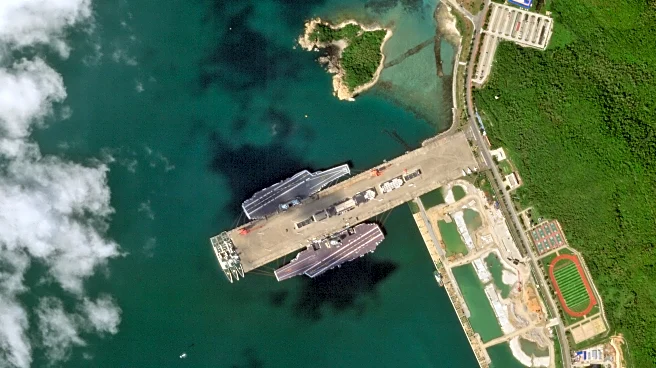What's Happening?
The United States and Japan have conducted a joint submarine exercise to bolster their defense capabilities in response to China's expanding naval presence. The U.S. Navy has deployed nuclear-powered submarines
across the western Pacific as a deterrent, while Japan is considering the development of its own nuclear-powered submarines. This move is part of a broader strategy to counter China's military buildup, which includes the world's largest navy by hull count. The exercise involved the Japan Maritime Self-Defense Force submarine JS Unryu, which docked at Marine Corps Air Station Iwakuni for a resupply operation, marking the first such visit by a Japanese submarine to the base. The operation demonstrated the logistical capabilities of U.S. and Japanese forces and was part of a larger joint exercise conducted by Japan's Self-Defense Forces.
Why It's Important?
The joint exercise between the U.S. and Japan underscores the strategic importance of their alliance in maintaining stability in the Indo-Pacific region. China's military expansion poses a significant challenge to U.S. dominance and its allies, prompting increased military cooperation between the U.S. and Japan. The potential development of nuclear-powered submarines by Japan could further enhance its defense capabilities, providing a counterbalance to China's naval power. This development is crucial for the U.S. island chain strategy, which aims to project military power and defend against potential Chinese aggression. The exercise also highlights the importance of logistical support and rapid resupply operations in maintaining a robust defense posture.
What's Next?
The future of Japan's nuclear-powered submarine program remains uncertain, with potential U.S. assistance contingent on political and strategic considerations. President Trump has expressed support for South Korea's similar ambitions, indicating possible U.S. backing for Japan. The ongoing military cooperation between the U.S. and Japan is likely to continue, with further joint exercises and strategic planning to address the evolving security landscape in the region. The response from China to these developments will be closely monitored, as it could influence future military and diplomatic actions by the U.S. and its allies.












